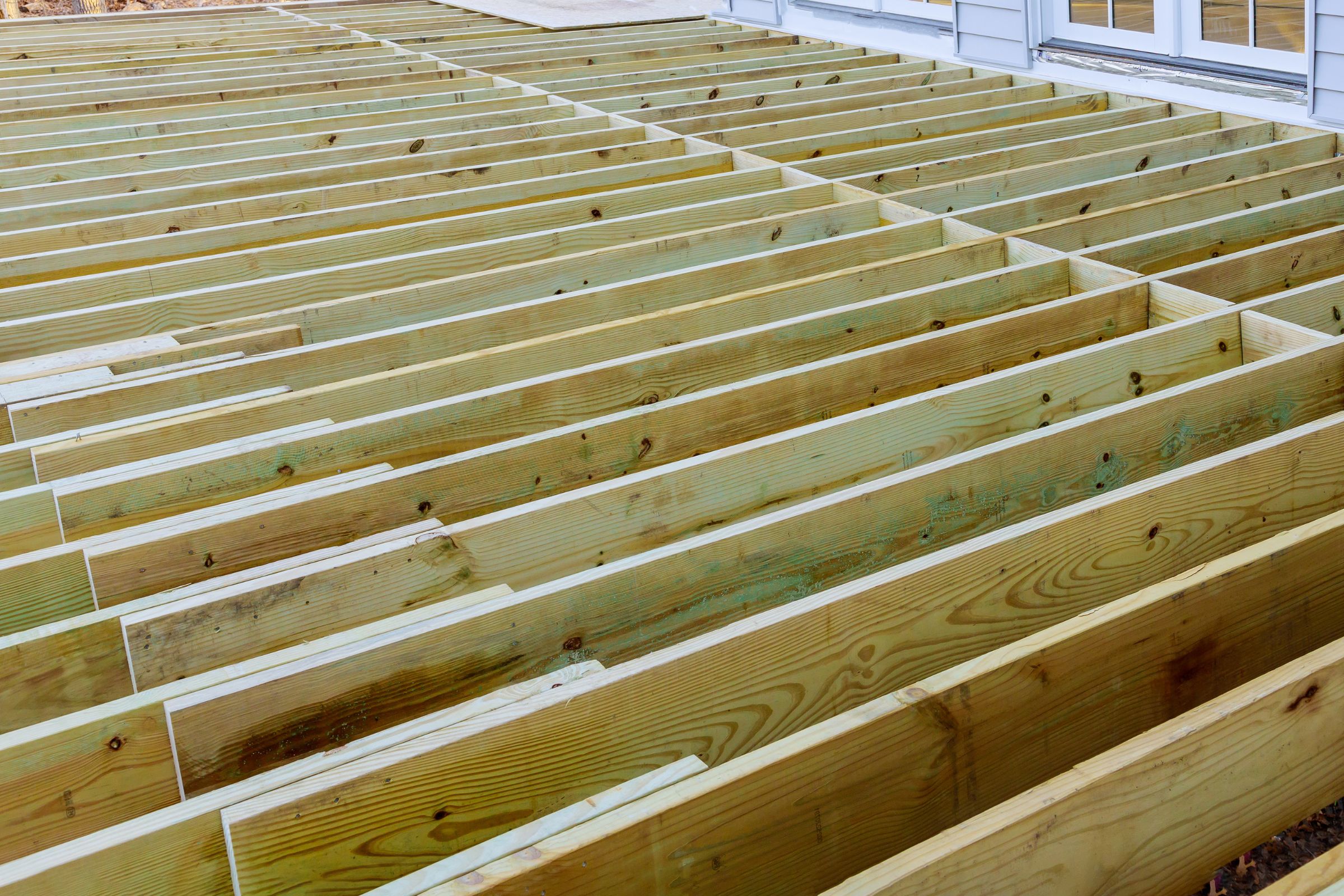
By Carl’s Guide on Decking Installation Timelines and the Permit Process
Obtaining necessary permits and following proper decking installation timelines is vital for a smooth and compliant installation process. Permits ensure that the construction is compliant with building codes and regulations, protecting both the homeowner and the contractor from potential legal issues. Additionally, adhering to the correct installation timeline ensures that the project stays on track and is completed in a timely manner, preventing any unnecessary delays or extra costs.
The potential consequences of not obtaining the required permits and adhering to the correct installation timeline can be severe. Without the proper permits, the installation may be deemed illegal, leading to fines, stop-work orders, or even the need to redo the project entirely. Skipping or disregarding the installation timeline can lead to a rushed, subpar result, or cause complications with other scheduled projects.
Decking installation timelines may be affected by the season, with busier seasons potentially leading to longer wait times for permits and scheduling. However, off-seasons may offer a quicker turnaround for permits and more flexibility in scheduling the installation. By understanding and following the proper timeline and obtaining the necessary permits, homeowners and contractors can ensure a successful decking installation process.
Decking Installation Timelines
The installation timelines for decking can vary based on different factors such as the type of work being done and the season.
Regarding railing installation, it typically takes 4-6 weeks to complete. Resurfacing a deck generally takes 2 weeks during the off-season and 4-6 weeks during the busy season. Obtaining a permit for decking installation can also affect the timeline. It usually takes 8 weeks during the off-season, but this can extend to 8-12 weeks during the busy season.
These timelines are important to consider when planning a decking installation project. It’s essential to factor in the time needed for each aspect of the installation process to ensure a smooth and efficient project timeline. Whatever project you are looking to get done, from railing, to resurfacing a deck, to brand new deck, understanding the timelines for each aspect of the installation process is crucial for successful project completion.
Understanding the Permit Process
Navigating the permit process is a crucial step in any construction or renovation project, including installing a new deck. Understanding the permit process is essential for ensuring that the project meets all legal and safety requirements. This process involves obtaining the necessary permits and approvals from local government authorities, such as building, zoning, and environmental departments. It is vital to understand the application process and the specific regulations and codes that need to be adhered to. Having a clear understanding of the permit process can help avoid unnecessary delays, fines, and legal issues, ensuring that the decking project is completed successfully and in compliance with all regulations.
Step 1: Plans are reviewed with customer for approval.
- The project management team gathers all necessary project details, such as the scope of work, design plans, and materials to be used for construction.
- Based on the decking project details, the project management team fills out the construction permit application, including all required forms, supplementary documents, and subcode forms.
- The project management team also includes a certificate of occupancy forms, if applicable, along with contractor information, including licenses and insurance.
- Once the construction permit application is complete, the project management team presents it to the customer for review and signature.
- Additionally, the project management team ensures that the customer understands the content of the construction permit and its associated documents, answering any questions or concerns the customer may have.
Step 2: Permit is Submitted to the Town
After obtaining all the necessary documentation and plans, the next step is to submit the required construction permit to the town.
Once the permit application and accompanying documents are submitted, the town’s building department will review the application and plans for compliance with local building codes and zoning regulations. This process typically takes around 4 weeks for approval, although it may vary depending on the town and the complexity of the project.
During this time, the building department may request additional information or revisions to the plans before granting approval. Once the permit is approved, the construction can begin as per the approved plans and specifications.
Step 3: Prepare for Installation
Before beginning the decking installation process, it is crucial to adequately prepare the work area. This includes gathering all the necessary materials such as decking boards, screws, joists, and any other required tools. Additionally, ensure that the work area is clean and obstacle-free to provide a safe and efficient environment for installation.
Any potential safety hazards such as uneven ground, loose nails or screws, or nearby electrical wires are also checked. Addressing any safety concerns before starting the installation process helps to minimize the risk of accidents or injuries.
Depending on the season, this preparation phase may take 1-2 weeks to complete. It is essential to take into consideration any weather-related delays, such as rain or extreme temperatures, that may impact the timeline for preparing the work area.
Importance of Inspections Throughout Installation
For a decking installation project, inspections throughout the process are crucial. These inspections ensure that the installation is being carried out according to specifications and safety standards. They also help to identify and address any issues or errors early on, preventing costly rework or potential hazards after completion. These inspections play a vital role in ensuring the quality, reliability, and efficiency of the deck, ultimately leading to a successful and long-lasting end result.
Footing Inspection
It is crucial to conduct a thorough footing inspection to ensure the structural stability and prevent potential hazards for your deck. The footings provide the crucial support needed for the entire deck structure, and any issues with them can compromise the safety and stability of the deck.
During a footing inspection, it is important to examine specific points such as cracks, settling, and signs of water damage. Cracks in the footing can weaken the support, while settling can cause uneven weight distribution and compromise the stability of the deck. Signs of water damage, such as rot or erosion, can also weaken the footing and lead to structural issues.
This process is typically completed the day after the footing is set to allow for the concrete to cure and settle. This timing allows for an accurate assessment of the footing’s condition and the opportunity to address any issues before continuing with the deck construction.
Frame Inspection
When visually inspecting the deck’s frame, it is important to thoroughly check the welds and joints for any signs of damage or wear. Look for cracks, rust, or any signs of weakening in these areas, as they are crucial for the structural integrity of the frame. Additionally, inspect the overall condition of the frame for any dents, bends, or other visible damage.
To further ensure the structural integrity of the frame, a specialized frame inspection tool can be used. This tool is designed to detect any issues that may not be visible to the naked eye, such as internal cracks or weaknesses. The process involves using the tool to scan the entire frame, paying close attention to areas where welds and joints are located. Any abnormalities or structural issues revealed by the inspection tool will be further assessed and addressed accordingly.
Final Inspection
Once the deck is completely installed, a final inspection is necessary to ensure that it meets all the necessary requirements and is safe for use.
During the final inspection, an inspector will check for compliance with local building codes, safety standards, and structural integrity. They will also examine the quality of the materials used and the craftsmanship of the installation. Common requirements include proper attachment to the house, sufficient railing height and spacing, secure stair construction, and adequate support for the weight of the deck and its occupants.
It is important to thoroughly review the checklist provided by the local building department to ensure that all aspects of the deck meet the necessary criteria. If any issues are identified during the final inspection, they must be addressed and corrected before the deck can be approved for use.
Decking Installation with By Carl’s
A new deck can be a great addition to any home, providing extra space for outdoor entertainment and relaxation. However, the process of installing a deck can often be overwhelming, especially when it comes to obtaining the necessary permits. Carl’s aims to simplify this process and ensure a smooth experience for homeowners.
At Carl’s, we understand that every decking project is unique and requires careful planning and execution. That’s why our team is prepared to help you navigate through the complexities of your project. If you are looking to have a new deck installed and have any questions about the process and timeline, feel free to contact us today.



